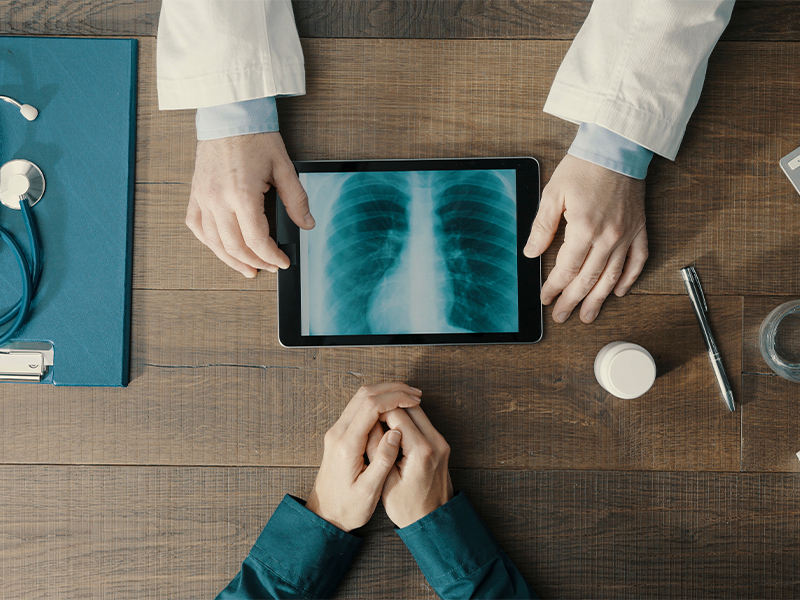Did you know that, even if you’re not a smoker, you could still be at risk for lung cancer? A lung specialist in Singapore shares how you can protect yourself by knowing the symptoms of lung cancer and catching it early with lung cancer screening.
3 ways to ensure early detection
Lung cancer is the second most common cancer worldwide, the leading cause of cancer death for men and the second most common cause of cancer death for women. With such high incidence rates, it’s really no coincidence that lung cancer does not usually show symptoms until its later stages. Catching it early when it’s easier to treat is, therefore, key to surviving lung cancer, explains DR ANEEZ AHMED, senior consultant thoracic surgeon. In fact, he says that for patients with small, early-stage lung cancer, the cure rate can be as high as 80 to 90 percent.
To enable early detection and even elude long cancer altogether, he suggests the following strategies.

#1 Know the risk factors – and your risk status
Lung cancer can develop in anyone, regardless of their smoking habits. So, even if you’ve never had a cigarette in your life, it’s worth knowing where you stand in terms of your risk status.
Individuals are most at risk for lung cancer if they:
- currently smoke or smoked in the past;
- have been around second-hand smoke;
- have undergone radiation therapy;
- have been exposed to radon gas, asbestos and other carcinogens; and
- have a family history of lung cancer.
An individual’s risk also goes up with age. So, early lung cancer screening is recommended for anyone above the age of 55, regardless of risk factors, and those individuals with key risk factors.
A simple EarlyCDT-Lung (early cancer detection test) blood test can help identify if you have an increased risk of lung cancer by diagnosing cancer-associated autoantibodies in your system. Other screening tests can also be done to assess your risk.
#2 See a specialist for any symptoms of lung cancer
Lung cancer that has progressed to its later stages may present with symptoms that include:
- a new cough that doesn’t go away;
- coughing up blood, even a small amount;
- shortness of breath;
- chest pain;
- hoarseness;
- unintentional weight loss;
- bone pain; and
- headache
Dr Ahmed says that if you experience any of these lung cancer symptoms, it’s advisable to see a lung specialist immediately. Your doctor may order CT tests or other assessments for further investigation.
#3 Take steps to lower your risk
If you’re a smoker who just can’t quit, seeing a lung cancer specialist can help, says Dr Ahmed. A lung specialist can provide guided strategies such as counselling, medication and alternative products to cigarettes.
What happens once you’ve caught it early?
Surgery is necessary to prevent the cancer from spreading to other parts of healthy lung tissue, explains Dr Ahmed, who has a special interest in robotic thoracic surgery for lung tumours. In fact, he is the first doctor in ASEAN to be certified in level-three robotic thoracic surgery.
A major benefit of robot-assisted surgery, he says, is that it’s minimally invasive and only requires keyhole incisions, unlike traditional surgery where the thoracic cavity is open. “It also provides doctors with more precision, flexibility and control during surgical procedures and allows greater visibility in hardto-reach areas – thus improving patient outcomes.”
What’s more, Dr Ahmed says robotic surgery is less painful, and involves a shorter hospital stay and recovery period, as compared to traditional surgery.
International Centre For Thoracic Surgery
• #10-38 Mount Elizabeth Novena Specialist Centre, 38 Irrawaddy Road | 6591 8801
• #06-70 Mount Alvernia Medical Centre D, 820 Thomson Road | 6255 5633
icts.com.sg
This article first appeared in the November 2022 edition of Expat Living. You can purchase the latest issue or subscribe, so you never miss a copy!
To make the most of living in Singapore, read our latest City Guide here for free!





